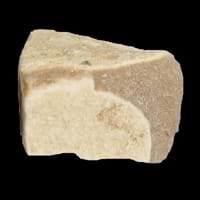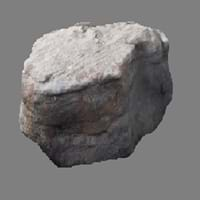Definition
Mudstone is a fine-grained, dark gray sedimentary rock, which is formed from silt and clay and is similar to shale but has less laminations
Gritstone or grit is a hard, coarse-grained, siliceous sandstone
Origin
Unknown
Pennines, England
Discoverer
Unknown
J.J. Ferber
Etymology
From the English mud and stone, from low German mudde and stainaz
From Grit + Stone
Class
Sedimentary Rocks
Sedimentary Rocks
Sub-Class
Durable Rock, Soft Rock
Durable Rock, Hard Rock
Group
Not Applicable
Not Applicable
Other Categories
Fine Grained Rock, Opaque Rock
Coarse Grained Rock, Opaque Rock
Color
Black, Blue, Brown, Green, Grey, Orange, Red, White, Yellow
Beige, Black, Brown, Colourless, Cream, Dark Brown, Green, Grey, Light Green, Light to Dark Grey, Pink, Red, White, Yellow
Durability
Durable
Durable
Appearance
Rough and Dull
Layered and Foliated
Interior Uses
Decorative Aggregates, Entryways, Floor Tiles, Interior Decoration
Countertops, Decorative Aggregates, Homes, Interior Decoration
Exterior Uses
As Building Stone, As Facing Stone, Paving Stone, Roof Tiles
As Building Stone, Garden Decoration, Office Buildings, Paving Stone
Other Architectural Uses
Curbing
Curbing
Construction Industry
Cement Manufacture, Construction Aggregate, for Road Aggregate, Making natural cement, Raw material for the manufacture of mortar
Construction Aggregate, Roadstone
Medical Industry
Not Yet Used
Not Yet Used
Antiquity Uses
Sculpture, Small Figurines
Artifacts, Monuments, Sculpture
Commercial Uses
Creating Artwork, Pottery
An Oil and Gas Reservoir, As a Feed Additive for Livestock, Gemstone, Metallurgical Flux, Production of Lime, Soil Conditioner, Source of Magnesia (MgO), Tombstones
Types
Marl, Shale and Argillite
Not Available
Features
Available in Lots of Colors and Patterns, Smooth to touch, Very fine grained rock
Available in Lots of Colors and Patterns, Generally rough to touch, Very fine grained rock
Archaeological Significance
Monuments
Not Yet Used
Used
Famous Monuments
Not Applicable
Data Not Available
Famous Sculptures
Data Not Available
Data Not Available
Pictographs
Used
Not Used
Petroglyphs
Used
Not Used
Formation
Mudstone forms when very fine-grained clay particles are deposited in water which settle at the bottom of water bodies. They are buried and compacted by overlying sediment hence forming mudstone.
Gritstone is a type of sedimentary rock which was formed on the floors of wide river deltas where the grit deposits were laid down, with every tide or flood dumping another layer of sediment.
Mineral Content
Biotite, Chlorite, Feldspar, Micas, Muscovite or Illite, Plagioclase, Pyrite, Quartz
Calcite, Clay Minerals, Feldspar, Micas, Quartz
Compound Content
Aluminium Oxide, NaCl, CaO, Iron(III) Oxide, Silicon Dioxide
Aluminium Oxide, CaO, Iron(III) Oxide, Potassium Oxide, MgO, Sodium Oxide, Silicon Dioxide
Types of Metamorphism
Not Applicable
Not Applicable
Types of Weathering
Chemical Weathering, Mechanical Weathering
Biological Weathering, Chemical Weathering, Mechanical Weathering
Types of Erosion
Chemical Erosion, Sea Erosion
Chemical Erosion, Coastal Erosion
Grain Size
Very fine-grained
Coarse Grained
Fracture
Not Available
Conchoidal
Porosity
Highly Porous
Highly Porous
Compressive Strength
Not Available
Toughness
2.6
Not Available
Specific Gravity
2.2-2.8
2.250
Transparency
Opaque
Opaque
Density
2.4-2.8 g/cm3
2.2 g/cm3
Resistance
Heat Resistant, Impact Resistant
Heat Resistant, Impact Resistant, Pressure Resistant
Deposits in Eastern Continents
Asia
Bangladesh, China, India, Russia
China, India, Kazakhstan, Mongolia, Russia, Uzbekistan
Africa
Ethiopia, Kenya, Morocco, South Africa, Tanzania
Namibia, Nigeria, South Africa
Europe
Austria, France, Germany, Greece, Italy, Romania, Scotland, Spain, Switzerland
Austria, Denmark, Germany, Great Britain, Netherlands, Poland, Sweden, Switzerland, United Kingdom
Others
Not Yet Found
Greenland
Deposits in Western Continents
North America
USA
Canada, USA
South America
Bolivia, Chile, Colombia, Ecuador, Peru, Venezuela
Brazil
Deposits in Oceania Continent
Australia
New South Wales, New Zealand, Queensland, Victoria, Western Australia
New South Wales, New Zealand, Western Australia
All about Mudstone and Gritstone Properties
Know all about Mudstone and Gritstone properties here. All properties of rocks are important as they define the type of rock and its application. Mudstone and Gritstone belong to Sedimentary Rocks.Texture of Mudstone is Clastic whereas that of Gritstone is Earthy. Mudstone appears Rough and Dull and Gritstone appears Layered and Foliated. The luster of Mudstone and Gritstone is dull. Mudstone is available in black, blue, brown, green, grey, orange, red, white, yellow colors whereas Gritstone is available in beige, black, brown, colourless, cream, dark brown, green, grey, light green, light to dark grey, pink, red, white, yellow colors. The commercial uses of Mudstone are creating artwork, pottery and that of Gritstone are an oil and gas reservoir, as a feed additive for livestock, gemstone, metallurgical flux, production of lime, soil conditioner, source of magnesia (mgo), tombstones.










